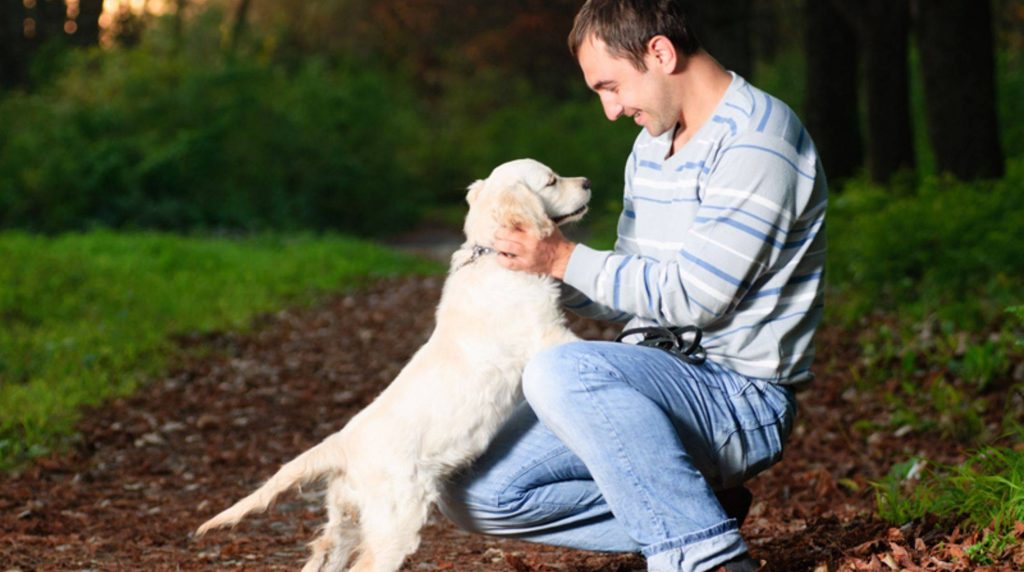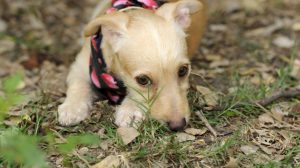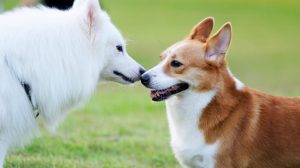During orientation training at the dog school, you and your dog will learn to take better care of each other. However, you can always add a few exercises with your darling when you are out and about.

If your dog would instead follow its nose than pay attention to you when walking, the following orientation training exercises will help you. Your four-legged friend learns to follow you, which is indispensable at the latest in dangerous or confusing situations.
Orientation training: Reward eye contact
One of the essential exercises in orientation training is eye contact. Your dog shouldn’t just run away when you go for a walk but should always take a quick look to reassure yourself that you agree with what he’s doing. For this, reward your four-legged friend every time he turns to you and looks in your direction.
You can do this with either a treat or, even better, a marker word or clicker. If he looks at you, click or say the marker word or throw him a treat. In this way, in positive reinforcement, you encourage your dog to look at you and wait for your agreement.
Exercises in walking with hide-and-seek
Your dog only pays attention to you when you call him. Otherwise, he does do what he wants? Then play hide and seek with him when you go for a walk. To be safe, it is better to have a second person with you for these orientation training exercises. So you don’t have to worry about your four-legged friend running away as soon as you hide. In the beginning, ideally, keep it as simple as possible. For example, stand behind a nearby tree trunk while your dog watches so that he can see you.
Your companion now asks your woof to look for you. As soon as your four-legged friend comes to you, give him joyful praise and rewards. Gradually you can increase the difficulty by hiding better and further away. If this works well, try the game without your dog seeing where you are going. For example, when going for a walk, take advantage of a moment when your four-legged friend’s thoughts are elsewhere and hide. Wait calmly, without shouting or signaling, until he finds you and rewards him. If it’s too risky for you alone, ask someone to accompany you to watch your furry friend.
Practice surprising changes of direction while walking
For the exercises with a change of direction, look for an area where you can go for a walk, where not so many people walk around, and where there are no dangerous areas such as busy roads or the like in the vicinity. It is also good if the path does not go straight ahead but has various junctions. Your dog runs a bit early, and you turn off without warning or go in the opposite direction – but always keep an eye on your four-legged friend or ask a companion to watch over him during the exercises, maybe to hold him on a long tow line.
If he happily walks away from you without noticing your absence, stops and wait. If he turns around and tries to make eye contact with you, you can proceed carefully, very slowly, so that your dog can catch up with you again. Praise him, be happy when he is with you, and then continue walking normally. You should only call him if he doesn’t notice the change of direction. If your dog has not yet learned to walk without a leash, you can also practice changing direction with a leash. This should not be too short, at least two meters long. As soon as your four-legged friend starts ignoring you, say his name briefly and turn in a different direction. Then walk a little – but not so far that the line starts to stretch – and wait. If your dog looks over at you or even comes up to you, he gets a reward.








